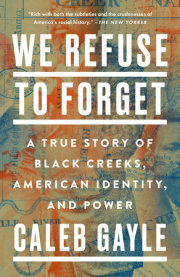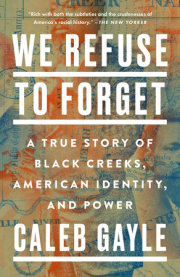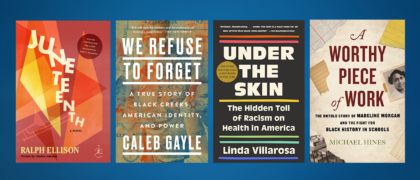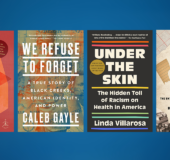Chapter 1—Collateral Damage
"He was compelled to seek safety by hasty flight." —Cow Tom, Loyal Creek, Abstract #160, 1870
For weeks, the battle had been raging not far from Cow Tom's home. Smoke from artillery fire hung in the air, and the groans of injured and dying men were constant day and night. This Civil War battle happened outside the United States, and it disrupted the lives of people the United States had turned from native dwellers to foreigners.
On July 15, 1863, Major General James Blunt of the Union Army called on his 250 cavalry soldiers to bring with them their guns, swords, and four pieces of heavy artillery. Familiar sights and sounds of battle preparation animated the day: the galloping of horses, the continual barking of orders at all hours of the night, cleaning of weaponry and equipment to pass the time waiting for a battle they knew would come even if they didn't know when. Young men had received orders from Blunt to walk along the eastern bulge of the Arkansas River in Indian Territory as they awaited to know their fates—clarity that the general just couldn't give them.
Over the next two days, Blunt guided his troops through the last thirteen miles of thicket, forest, wood, and river. For a brief two hours, his men—eventually a little less than three thousand in total—sat just over a mile from the Confederate enemy, who had been resting. Blunt's soldiers grabbed water from a nearby ridge to slake their thirst and unpacked their haversacks, whose contents ranged from notes from home to Bibles, but most important, food kept safe by the sacks' stitching and weaving reinforced by tar.
By ten a.m. on July 17, the men of the Union Army were assembled into two columns. According to Blunt, "The infantry was in column by companies, the cavalry by platoons and artillery by sections, and all closed in mass so as to deceive the enemy in regard to the strength of my force. In this order I moved up rapidly to within one-fourth of a mile of [the Confederate] line, when both columns were suddenly deployed to the right and left, and in less than five minutes my whole force was in line of battle, covering the enemy's entire front."
The Confederates were under the command of General Douglas H. Cooper, who had been dispatched to defend what had become a major supply route. His Confederate comrades had arrived in this part of Indian Territory not more than a year before and in short order had put up a commissary, a field hospital, arbors, and housing tents. Built along the Canadian River, the settlement had ample fresh water for both the troops and, just as important, the livestock.
But this wasn't just an ideal place to set up a field hospital and house troops. The twenty-five miles from where General Blunt started his advance on this group of Confederate soldiers was in a town called Honey Springs, in a part of the continent that had not yet been determined to be part of either the United States or the Confederacy. This was Indian Territory. Honey Springs was along the main route that connected the outer lands that were disputed by the Union and the Confederacy, an area that included Texas, Kansas, Missouri, and Arkansas. Honey Springs was a stagecoach stop, a watering hole, and a weigh and refueling station. Along this trail Confederate soldiers received and distributed provisions, weapons, timber, and livestock. But as the Civil War raged, this area became even more critical as the Union wanted to fight proxy battles on native land.
But the land on which these soldiers fought—where men Black, white, and Indigenous died—was not in America. The Civil War wasn't just fought on American soil. One hundred seven such Civil War battles were fought outside America—fought in the metaphorical backyards of Native people. The Battle of Honey Springs took place just steps from Cow Tom, whose later actions prompted generations to tell others, "I got Indian in me."
The Union defeated the Confederates at Honey Springs, and in the battle's aftermath Cooper's army looked to decamp until they determined where to go next. They came across empty homes and farms in the area in which food and water had been left by people fleeing the fighting across the region. The battles had hollowed out towns like Coosa, Coweta, Tuckabatchee, North Fork, Canadian Colored, and Arkansas Colored. Creek towns. And the land on which the Confederates fought was Creek land, belonging to the citizens of the Creek Nation.
A nation once unified was scattered. Homes left in the state of people set to flee at moment's notice, farms and cattle left unattended, ways of life abandoned. Scores of Creek families headed north to Kansas with whatever they could pack, trying to escape the war they didn't ask for.
By August 1863, Confederate soldiers made their way twelve miles from North Fork, Oklahoma, where they lost their way along the Canadian River and discovered that not all Creek territory had been abandoned. They came upon a curious group of Creek families who had stayed—and who looked like the people whom neither the U.S. Constitution nor the Constitution of the Confederate States recognized fully as people.
One of those people was Cow Tom. He had stayed, and so had a host of other refugee Creeks, some of whom shared his jet-black skin tone and some of whom didn't. When these Confederate soldiers—tired, hungry, desperate, and likely not appreciative of the Black Creek cause—descended on Cow Tom's land and the land of his neighbors, it became clear that the Creeks' presence on their land wasn't greeted with enthusiasm by the Confederates.
***
Days into the ever-growing presence of Confederate soldiers on his land, Cow Tom and his wife, Amy, took what they could pack onto their backs and left. They walked away from everything that they had known—where they had raised a son, where they had run a grist mill, where they'd farmed and raised cattle—and plunged into a dark unknown. Night was the only time they could travel because that was the only time they could move undetected. With Confederate rebels in the area doing whatever overzealous white colonists do—claiming for themselves land and property that was someone else's—they didn't know what they'd encounter. There was no guarantee that any people they met would be friendly, particularly if those people were hungry and war-worn Confederate rebels. And it was virtually certain that any white person they'd encounter would see Cow Tom as just a slave running from his master. There was even less chance that Cow Tom would be seen as what he was: fully Creek and fully Black, and free.
His days would never dull the hopes for the grist mill he once told a U.S. official he badly wanted or his dream of a school for his children and grandchildren to attend.
After more than a week of being on the run, Cow Tom and his band of travelers—hungry, wet from continuous rain, having suffered cold nights and been burned by the daytime sun, and limitedly nourished—came to what seemed like a place to rest. They made it to an outpost called Fort Gibson with no certainty that they'd be accepted. There was no guarantee that Fort Gibson still sat under the control of the side that was supposedly against slavery. But it didn't matter: Cow Tom "was compelled to seek safety by hasty flight," he said later, because the skirmish between warring white people had laid waste to all he knew. And since he wasn't alone and a brazen, pioneering brand of leadership seemed core to his existence, he had to lead a Nation that like so many other marginalized peoples in America had become collateral damage to the U.S. government's ambitions.
Chapter 2—Enough family. Let's create a nation
"The white people intend to take all their lands." —Unnamed Creek headman, May 2, 1763
Most American schoolchildren who have taken a basic history course can tell you that the United States experienced its fair share of battles before most say it was founded in 1776. As a student, I was fascinated by the stories of Pontiac, the Ottawa chief during the French and Indian War. I read as much as I could about the British, French, and American soldiers duking it out over what they saw as unsettled land, battling over who would rule this "new" nation. I followed the stories of Spanish conquistadores owning Florida, losing Florida, and gaining Florida again only to ultimately lose it.
What this instruction didn't explore was the lives of those people who lived, cultivated, and cared for this land first. When the Europeans came to North America, Indigenous groups were forced to decide how to deal with them, employing in turn the tools of diplomacy and the weapons of war to survive. As these invading white men took their land, Indigenous people watched, fought, and prayed, as the old hymn put it, over how much of their land would be taken over. And when they inevitably were faced with deciding whom to side with and whom to oppose, these Native tribes and Nations faced critical decisions that would determine survival or certain death.
Creeks especially had to practice a special brand of diplomacy. From 1754 to 1763, the British colonies in North America fought against New France's colonies, and both Britain and France had the help of Indigenous allies. The French seemingly needed these Indigenous peoples more than the British because the British already had nearly two million people living in their colonies, many of whom they could conscript into battle, while the French had only about sixty thousand. To counteract the British superiority in numbers, the French enlisted the efforts of their "allies" in the Wabanaki Confederacy, which contained numerous tribes, while the British had the Iroquois, the Catawba, and the Cherokee fighting for them.
The British ultimately prevailed in the French and Indian War, though each side gave up land they owned-because white men get to say what they own even if they only owned it because they proclaimed it so. For the Creek, victory for the British Crown spelled an end to its preferred posture: neutrality. And the end of neutrality meant that its future would be uncertain.
Before the war, the Creek maintained their neutrality, as historian Steven Hahn put it, "to defend Creek territory from unwanted intrusion of backcountry settlers," and to sit apart from those Nations that pinned their hopes on one imperial colonial power triumphing over the other. Long before the extreme bloodshed of the nine-year war, the Creeks made clear their neutrality: in 1713, the Creeks signed what became known as the Coweta Resolution, which established their position of neutrality among Great Britain, France, and Spain. It was a uniting banner under which the Creeks became known to European colonists: standing aloof in this evolving, rapidly changing landscape.
With Britain victorious in the French and Indian War, all of this changed. War no longer distracted the British Crown from subordinating its colonies in North America and all who lived there, Creeks included. The Creeks long feared what would happen if one country emerged on top in this bloody war, which had taken the lives of more than ten thousand by disease, more than fifteen hundred by wounds, and roughly the same number killed in action. The Creeks knew then, as many learned later, that whoever won would fix their eyes on Creek land as well as the fertile lands of other Indigenous people.
The Creeks saw it coming.
Even during the war, the British compelled the Creeks to cede parts of their territory in Georgia to the British Crown—territory that the Creeks had called their own for centuries. So when the war ended, they knew what was coming. The ending of this war would start, in historian Angie Debo's unsettling phrase, a long "road to disappearance" for the people who had known America long before America was America.
***
Most nations are founded by conquest. But the British, the French, and the Spanish founded their North American colonies, first, on the power of their words: "It is now ours." By contrast, the Creek Nation was invented by survival.
Long before the British, the French, and the Spanish arrived on American shores, the predecessors to what we now call the Creek Nation formed bonds based on communal understandings of land shared one with another. But this survival enriched everyone: tribe after tribe, all bound by the realization that they all were to share the land.
The Creeks were scaffolded by bonds-deep bonds. It took until the end of the Civil War for the Creek Nation to build itself into what we know it to be today, replete with a constitution that the United States recognizes, with three branches of government. But the mechanics of a government existed long before the United States asked this confederacy of kinship to become a Nation.
The Creek lands—now primarily southern Tennessee, all of Alabama, western Georgia, and part of northern Florida, though a smattering of settlements could be found even more expansively—were outlined by small townships often founded by families and clans that established relationships with other families and clans, often through marriage. These towns were run by councils chaired by a leader or chief called a mico (spelled also "micco" or "mikko").
Long before the British began laying claim to the Nation, kinship, family, and loyalty knit together this sprawling confederation of tribes they called "Creek."
It is often in nostalgia—the dreaming and wishing for another moment of "yesterday"—that we learn most about who we were and who we could be. Pleasant Porter, a Creek chief, did a lot of dreaming. In Porter's annual address to the Creek Nation Council, he concluded with a bold remark. "The vitality of our race still persists. We have not lived for naught. We are the original discoverers of this continent and the conquerors of it from the animal kingdom and from it first taught the art of peace and war, and first planted the institutions of virtue, truth, and liberty." No stranger to reminding white colonialists of the ingenuity of the Creek, he was clear when he said: "We have given to European people on this continent our thought forces. The best blood of our ancestors has been intermingled with their best statesmen and leading citizens. We have ourselves an indestructible element in their natural history. We have shown [that] what they believe to be arid and desert places were habitable and capable of sustaining millions of people. We have led the vanguard of civilization in our conflict with them for tribal existence from ocean to ocean."
What Porter was hinting at was the resilience of his people in the face of the hardship brought by European settlers who had their own, selfish interests. But it was his dreaming that gives the best understanding of what the Creek Nation was before white men's dictatorial rule forced them to negotiate for their survival with a figurative gun to the head of the Creek Nation.
Copyright © 2022 by Caleb Gayle. All rights reserved. No part of this excerpt may be reproduced or reprinted without permission in writing from the publisher.






